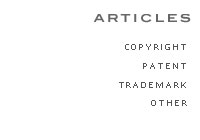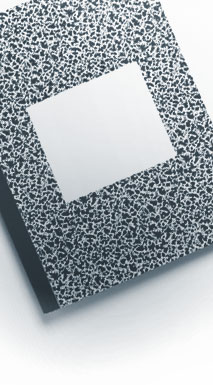

 |
||
 |
Design and the Law, Third Parties Frank J. Martinez, Esq. In working with vendors, designers need to remind themselves to keep the client’s interests paramount. Convincing a client that you are the right designer for the job is a complex process subject to many considerations. However, at its heart, the relationship is founded on trust. Frequently, depending upon the nature and scope of the project, designers, often without realizing it, request and are granted responsibilities that make them the fiduciary of their client. Some clients do not want to deal with third-party vendors and ask the designer to take responsibility for this performance. Designers typically become a fiduciary when they agree, on behalf of their client, to hire, supervise, and pay third-party vendors. Designers often want to be responsible for the entire process because they like the control it gives them or because they like working with a limited number of trusted vendors. Provided the client is getting the best prices that can be negotiated, there is nothing wrong with working this way. However, under such circumstances, designers must always remember that they work for the client and no matter how close they are to a vendor, they should not solicit or accept pricing or incentives that are, in effect, detrimental to the interests of the client. In extreme cases, such actions may even be illegal, subjecting the vendor and the designer to criminal liability. Blacks’ Law Dictionary defines a fiduciary as “a person having duties involving good faith, trust, special confidence, and candor towards another.” In its purest sense, a fiduciary duty is “a duty to act for someone else’s benefit, while subordinating one’s personal interest to that of the other person.” Most designers are concerned about how their work is executed, and how it is reproduced. They care because this is the way their work serves the client and how it is seen by the world. But designers should actively balance the natural impulse to control the entire life of the project with the legal liability that they assume when they willingly or unwittingly agree to take responsibility for the production of their design. The key to comprehending, limiting, or managing such responsibilities is to understand how they arise. A fiduciary duty does not solely depend upon an agreement or contractual relation between a designer and a client; it results from the very nature of the relationship. Specifically, when a client depends on a designer’s expert advice and commits resources on the basis of the designer’s advice, a fiduciary relationship is formed, even in the absence of a written contract: It’s the relationship of trust combined with the client’s reliance of the designer’s recommendations that creates the fiduciary obligation. When creating designs for use on the Web, the designer is often required to use the services of third-party programmers, who must represent and warrant that the provided software des not violate anyone else’s rights and that they, the programmers, are expert in providing this service. When rendering a new trademark – in effect a new identity – for a client, the designer walks a legal tightrope, and under such circumstances, the designer should always require that the client be responsible for all legal clearances and their costs. Avoiding unnecessary liability is not difficult and should be part of the process whenever possible. Clarity in the contractual relationship is the first, step, insuring that you do not unknowingly form a fiduciary relationship. Define, with specificity, the nature of your responsibilities. Identify what third-party vendors are used at the suggestion of the client and require that the client enter into those agreements separately. If the vendors are suggested and retained by the designer, on behalf of the client, require that the client review and ratify the contract. For the average designer, the most common situation where these issues become important is when they undertake responsibility for reproduction of the design through some form of printing. Despite the digital revolution, a large portion of design work is created for reproduction by various printing methods. Every designer soon learns that the process hasn’t really changed that much since Gutenberg. Essentially, printing is still a manufacturing process. It is technical, often messy, and utterly dependent upon the skill of the craftsmen who make it all happen, which is why the customer often prefers to make the designer responsible for choosing the printer and supervising the print run. Accepting such responsibilities will place the designer squarely in a position of fiduciary responsibility. From a legal perspective, unless the client signs the contract for the printing and directly approves the print run, the designer will be responsible for the performance of the printer and the quality of the work. It’s important to remember that just because the client proofreads the final off-press or press-proofs doesn’t mean that he has accepted the finished product. Responsibility for acceptance of the job should be specified between the client and the designer as well as between the printer and the party who will be approving the job. Printers tend to follow a set of guidelines or trade customs, the most common of which is the Trade Customs of the Printing Industry of North America. While it isn’t mandatory, most printers tend to incorporate some, if not all, of the trade custom terms into their contracts. Therefore, it is wise to develop some understanding of how those terms could affect the complex relationship between the designer, the client, and the printer. In particular, it’s wise to determine how the printing trade customs could create liability for designers in a fiduciary relationship. Prior to submitting your specifications for a quotation, keep in mind that the printer can only deliver an accurate quote if the information provided is accurate. Many disputes between designers and prints arise because of incomplete or misunderstood job specification. Remember that most printers will require adherence to the production schedule that you agree upon. Don’t rush when your putting together the specification – a few extra hours spent planning can save you months of regret, especially since the client is likely to rely on a designer’s representation as to total costs involved. In disputes, it is not uncommon to hear that if the true cost had been known, the project would have been altered or would have been terminated altogether. Most printers will honor a quotation for 30 days, sometimes beyond that. If thee quotation does not specify an expiration date, request a written one. If your client can’t get an approval within the stipulated time, make sure that the printer will still honor the quoted price before you authorize production. In addition, if the job is expensive, many printers will required that clients demonstrate credit worthi8ness, or pay in advance, because the raw material, such as paper, can amount to as much as 50 percent of the total cost of the project Furthermore, the printer’s contract might stipulate that its inability to finish the job due to natural disasters or accidents beyond its control is a legitimate excuse. If the project is expensive, ascertain whether the printer’s performance will be covered by its insurance. If not, make sure your client is made aware of the risk involved. Printers normally wish to be compensated for experimental or creative work that they provide on behalf of your client. Unique or untried printing techniques or digital retouching that is more in the nature of creating art than simply fixing a bad photograph should not be requested by a designer. In such cases, the client needs to approve in writing the extra costs. In addition, make sure the printer releases all rights to any retouching or digital art creation, since the printing trade customs suggest that printer retain ownership and the copyright to such work. If the printer creates mechanical art or has to modify electronic files, make sure that there is a clear understanding as to the ownership of those materials. Notwithstanding, unless special provisions are made, it is normal for printers to retain ownership of printing plates and the negatives they produce as well as the other basic materials of the process. If you are sending a digital file to the printer, ensure that it’s accurate and that you have a clean, correct, and uncorrupted back-up of all the files. Printers will not accept responsibility for the loss of an original data file. In addition, many printers will not assume responsibility of, or guarantee, that every type of digital transmission will be perfect. In fact, many printers will not accept large job files by electronic transmission. If you need press proofing or extra cooler proofs, expect to pay for them, and remember that even press proofs may not accurately reflect the finished product. And if there are many extra copies of the finished project, or not enough of them, the printer may attempt to modify the final invoice accordingly, in accordance with the overage and underage provisions of the contract. If your client will not accept overage or underage, inform the client and advise that the quotation is likely to reflect that requirement. Most printers provide a set of pre-press proofs, which, depending on the process, can vary significantly in quality and accuracy. These proofs will be used to check position and as a final opportunity for proofreading. Only off-press proofs of the highest quality would be used for checking color. Any changes in the nature of author’s alterations will typically generate additional costs. In addition, overlooking any errors could result in extra costs if final production is started based upon your prior approval of the proofs. If you are providing materials such as paper, make sure that what you bought gets delivered and is actually used in printing the piece. Furthermore, most printers will only ship in a single shipment, without storage, to the location you’ve specified. Any deviation such as multiple deliveries or storage for even short periods of time will likely generate extra costs. The printer is also likely to require payment within 30 days of delivery, with any written claim for defects, damages, or shortage returned within ten days of delivery. Designers will no normally accept responsibility for work that may be libelous or that infringes the copyrights of others. In addition, a printer will only accept economic responsibility equivalent to the value of the printed matter and will refuse to compensate a designer or the client for loss of revenue or other losses from errors in the work. Planning is the key for success when getting your work printed. In almost every case, a bad experience with printing can be traced to the lack of research, preparation, and communication between the designer, the client, and the printer. A designer’s relationship with a client can be a rewarding experience. When the relationship is good, the resulting work can be equally as good. When they trust their designer, clients will be more willing to take risks. However, sloppy business practices or miscommunication on the part of a designer can undermine even the best of business relationships. Patience, planning, and integrity in the design process will usually result in a successful project.
Home Copyright Trademark Patent Litigation About Us ©2004 The Martinez Group PLLC |
 |